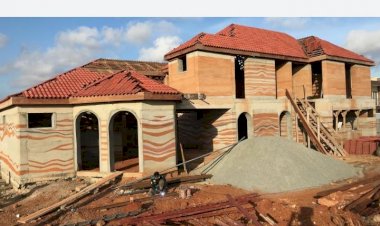How to Carry Out a Real Estate Market Analysis
A real estate marketing analysis also known as comparative market analysis is the study of the recent market value of the property that you are looking forward to buying or sell. Whether you are planning to buy or sell property, carrying out a real estate market analysis is important.

Before carrying out the market analysis, first, get acquainted with the historical data. Learn the historical market trends. Go through local newspapers, property magazines and online real estate websites. Then after that, you can follow the steps involved in conducting the analysis.
- Assess your Property
By assessing your property, you need to look at it closely and identify its selling points. What is the square footage of the house? How large is the living room? Does it have a fireplace? How many bedrooms are there? Is there a DSQ? What is the size of the kitchen? Do the windows allow enough natural light? And what view do the windows provide? Other things to look at are the parking space, extra storage spaces and the location of the property.
- Compare other Properties that are similar to yours
If your house is in a gated community, this will be an easy task, if not, you have to look for houses that are comparable to yours or that which you want to buy. The properties must be in a similar location to yours and should have similar features to yours. After identifying them, try to find if any of them have been sold recently or find those which are currently on sale. Check out the:
- Current listings
- Pending listing and
- The expired listings
Compare the prices of the properties in each category.
- List down all the prices of the current listings and note their differences. Watch the properties closely as they give you a clue of how your competitors in the market are.
- Pending listings which are the deals that have been finalized but are yet to be fully closed could indicate a shift in the property market. Check to see if the property is being sold at the listing price, or if the prices are lowered or pushed up.
- The expired listings will tell you which prices to avoid, and also other features that you could improve on.
For those that are on sale, how long have they been on the market? Check both those that have been in the market for so long and those that sold quickly. Understanding the difference will give you insights into the housing trends in a particular area.
- Come up with a Price Range
After steps 2 and 3, you will now be able to come up with the price range for your property, this will help you determine the market price. From the list of the comparable houses that are either sold or currently in the market, choose one property that is slightly better than yours, the price of this will be your ceiling value.
From the same list choose a property that is slightly below yours, say, one that is one bedroom less than yours. The price of this will give you your floor value.
- Determine the Market Value
In order to determine the market value of your property, you need to do some calculations. Of the comparable properties in your list, take the selling price of each and divide it by their square footage to get the price per square foot for each of the homes. Calculate the average price per square foot of all the comparable properties and multiply it by the square footage of the house you intend to buy or sell.

































